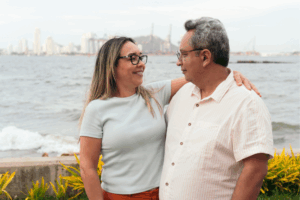If you’ve ever spent time in a hospital or rehabilitation center, you’ve probably heard the phrase “advance directive” floating around. Maybe you’ve even wondered what it is. An advance directive is a part of a document outlining your wishes for urgent or end-of-life care. It’s made “in advance” in case you’re unable to verbally communicate when needed.
Unfortunately, there are as many rumors as facts out there when it comes to this important phenomenon. Read on for some of the biggest myths about advance directives – and the truth that lies underneath.
Myth: you need a lawyer to make an advance directive
An advance directive is a legally binding document that doesn’t require a lawyer to create. As long as you are mentally competent to make decisions, you can fill out an advance directive on your own. Of course, it helps to have someone to discuss it with, such as a social worker or geriatric care manager. The directive must also be signed by two mentally and legally competent witnesses eighteen or older, but not necessarily in front of a lawyer. The only other stipulation is that neither witness can be named as one of the decision-makers in the directive.
Myth: an advance directive means someone else will make your health care decisions
Just by dint of the fact that you’re writing an advance directive means you are making the decisions.[1. “What are the benefits of having an advance care directive?” https://www.sharecare.com/health/critical-care/what-benefits-advance-care-directive] The only part your designee plays is to carry out the choices you specified, and only if the need arises. However, if you think that your first choice for a designee may (at some point) be unwilling to carry out your wishes, you can select an alternate designee.
Myth: deferring decisions to a loved one is the same as an advance directive
Although you may love and trust your next of kin (or healthcare designee) with all your heart, that doesn’t mean you both agree on healthcare decisions. And while they’re likely to take your views into consideration, technically, nothing is stopping them from doing as they please with regards to your care. If you want to outline exactly what occurs in a given medical situation, an advance directive is your best bet.
Myth: making an advance directive will hasten dying
Many people believe that advance directives are only contemplated when facing death. However, you can fill out an advance directive[2. “Download Your State’s Advance Directives,” https://www.caringinfo.org/i4a/pages/index.cfm?pageid=3289] at any time – including when you’re relatively healthy. And although end of life decisions can be uncomfortable to talk about, doing so in no way correlates to early mortality. However, you should let everyone know if you’ve made (or plan to make) an advance directive, including family members, doctors, and auxiliary health care providers.
Myth: an advance directive means choosing euthanasia
No, no, no. Euthanasia is the premature ending of a person’s life in order to prevent pain and suffering. However, through an advance directive you may order healthcare practitioners to take whatever measures necessary to prolong your life – including extraordinary ones. These measures are specifically designed to prevent early mortality (i.e., the exact opposite of euthanasia). Many people elect to forego these measures in order to avoid the pain associated with the end-stage of their medical conditions. However, that decision is entirely up to you. By completing an advance directive, you can request a passing consistent with your values, beliefs, and preferences.
Don’t put off making an advance directive
Don’t let myths about advance directives deter you from completing one. Although the decisions you’ll make may be difficult to think about, it’s much better to have these things planned out. If a medical emergency should occur suddenly, you want to be as prepared as possible. Far from being anxiety-provoking, making an advance directive can give you a better sense of control over your future.
If you are unsure of how to best help an aging loved one, the trained and compassionate staff at the Institute on Aging is here to help you make that decision and gain the best in at-home care for older adults. Contact us to find out more.







